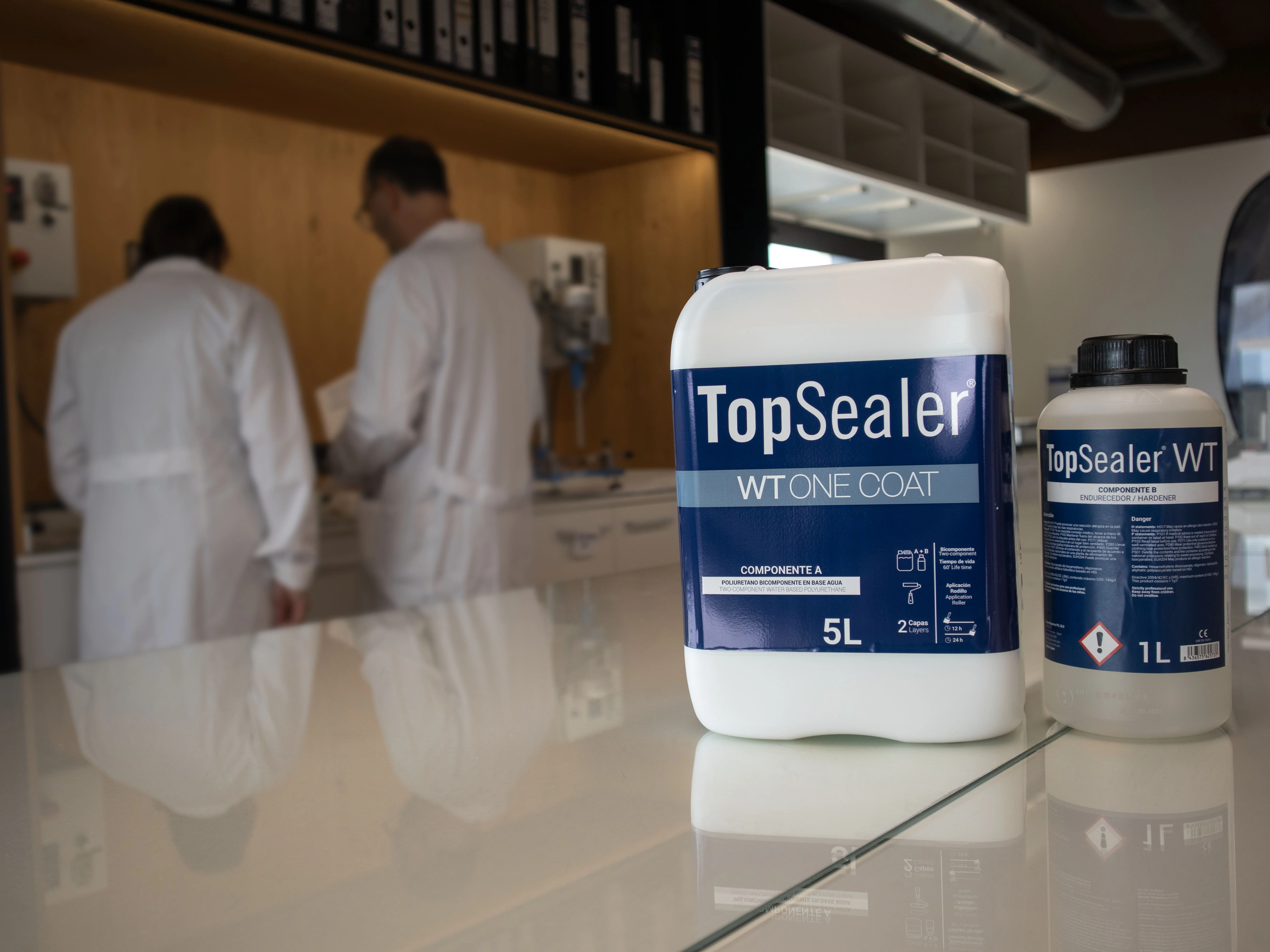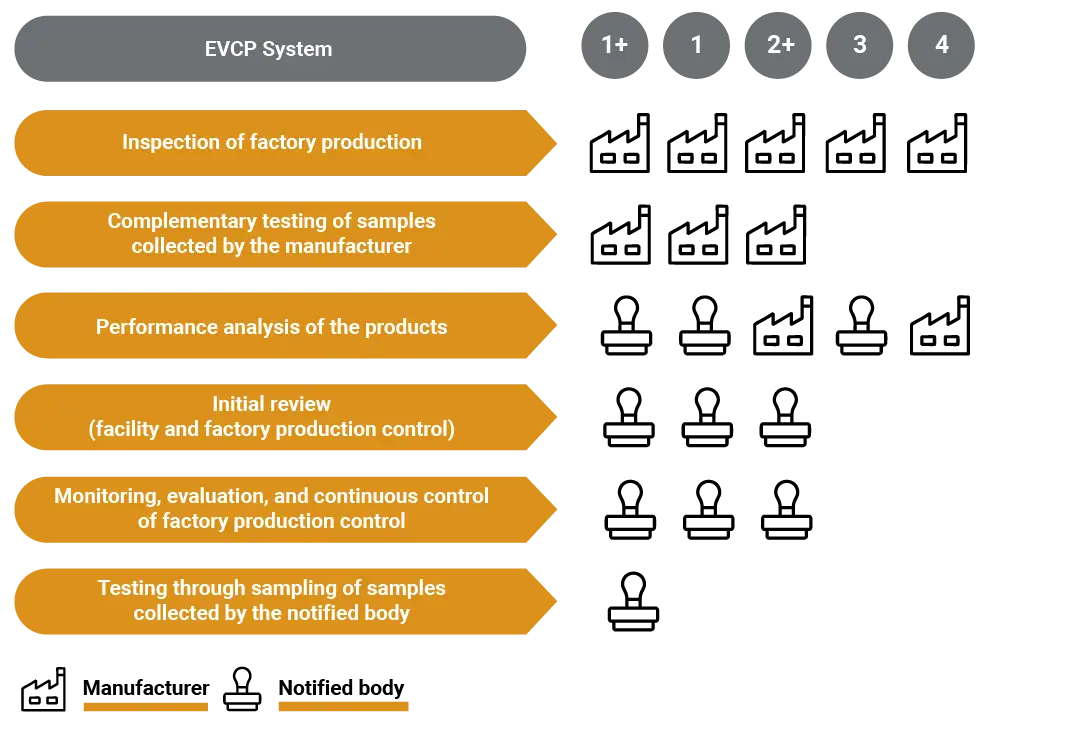The CE Marking and the importance of Topciment® products having it
As an international company, we operate in numerous countries, marketing the products we manufacture in-house at our facilities. Europe is one of our main markets, and as such, Topciment® adheres to the standards established by the European Community for the free circulation of all the products we design.
To sell within the European Union under the legal framework, some products—although not all are required—must have CE marking. In this regard, our decorative systems that require this distinctive marking have it. This symbol certifies that we make and sell exactly what we claim. Without it, we could not market our products with full guarantees within the European territory.
Below, we explain what the CE marking entails, its purpose and usage, when it is mandatory, the process for obtaining it, its validity, and many other relevant details. In this article, we also delve into the Topciment® products that bear this certification.

What is the CE Marking and what is it for?
The CE marking is a symbol that certifies that a product being marketed, or intended for future marketing, meets a series of requirements for sale within the European framework. In other words, the CE marking confirms that the product manufacturer has evaluated the product and, after this analysis, it complies with the safety, health, and environmental protection standards required by the European Union.
These conditions, established by the European Union for certain construction-related products (not all), must be met for legal distribution. Therefore, obtaining the CE marking is essential before the commercialization and launch of these products.
It is important to note that the CE marking does not have a fixed validity period. However, it is necessary to update the EU declaration of conformity required to obtain the certification. Updates must be made whenever any component of the product undergoes a change. These changes may include modifications to legislation, the product itself, or even the manufacturer's contact details.
Who grants the CE Marking?
The responsibility to certify the compliance of products with the European Union’s requirements lies solely with the manufacturer. No specific license is required to affix the CE marking to a product; the manufacturer must simply perform a thorough and detailed analysis of the product through a System of Assessment and Verification of Constancy of Performance (AVCP).
However, it is crucial to verify whether the product in question must undergo testing by a notified body. This is the procedure we have followed at Topciment®. Tecnalia, a leading Research and Technological Development Center in Europe, has rigorously carried out the necessary tests in its laboratories using the samples we provided.

Where and how is the CE Marking placed?
It is important to emphasize that the CE marking must always be visible to the product recipient or customer. In some cases, it can also be displayed on the packaging or accompanying documentation. Additionally, the marking must be perfectly legible and must not be removable or erasable under any circumstances.
Regarding the information the CE marking should convey, beyond details about the manufacturer and the product itself, it must include the reference number of the Declaration of Performance (DoP), the applied EN standard, or the European Assessment Document (EAD).
Which products require CE Marking?
Not all products are required to meet the demands of the European Union and obtain CE marking, only those affected in some way by specific regulations or directives. The responsibility for determining whether a product requires CE marking lies solely with the manufacturer. At Topciment®, we are fully aware of this responsibility and take it on accordingly.
It is important to note that if a product consists of multiple components or individual parts, each with its own CE marking, this does not automatically result in a global CE marking for the entire product. The responsibility for determining whether a product requires CE marking lies solely with the manufacturer. At Topciment®, we are fully aware of this responsibility and take it on accordingly.
Although obtaining CE marking is mandatory, unethical practices by some companies are not uncommon. It is not unusual to see news in the media about the falsification of this certification across various sectors, including healthcare, industrial, and construction industries.
How to obtain CE Marking: steps and procedure
- Ensure the product's compliance with the applicable requirements under the European Union's CE marking regulations.
- Determine whether you, as the manufacturer, can assess the product yourself or if you need to involve a notified body.
- Prepare a technical file that demonstrates the compliance of the product under analysis.
- Draft and sign a Declaration of Conformity for the European Union.

Types of CE Marking in the construction sector
Since July 1, 2013, manufacturers and importers have been required to apply CE marking to construction products covered by either of the following standards: a harmonized standard (ENh) developed by the European Committee for Standardization (CEN) or a valid European Technical Assessment (ETA) or ETAG issued by authorized bodies.
This requirement is outlined in the Construction Products Regulation (CPR) No. 305/2011. The regulation aims to eliminate technical barriers to the commercialization of construction products while ensuring that publicly available information about product performance is reliable and transparent.
1. Declaration of Performance (DoP)
The Declaration of Performance is a document in which the manufacturer of the construction product guarantees, assuming full responsibility, that the declared performance of the product is accurate. This document ensures transparency and is essential for introducing the product to the market since CE marking can only be affixed to products for which a Declaration of Performance has been issued in accordance with Articles 4 and 6 of the Construction Regulation No. 305/2011. In other words, without a DoP, CE marking cannot be applied.
There are some exceptions to the requirement for a DoP and CE marking:
- When the product is unique, not mass-produced, and intended for a specific construction project subject to national regulations.
- When the product is manufactured at the site where it will be used.
- When the construction product does not require industrial processing and does not risk the preservation of heritage.
2. European Technical Assessment (ETA)
The European Technical Assessment (ETA) is a document that specifies the performance of a construction product concerning its key characteristics. The ETA can be issued in two cases: If the product is not, or not entirely, covered by a harmonized European standard (ENh) and when the assessment mechanisms and criteria are defined in the European Assessment Document (EAD).
In the construction sector, there are four Systems of Assessment and Verification of Constancy of Performance (AVCP), which define the roles of the manufacturer and the notified body. These systems can be summarized as follows:
1. System 1+: The manufacturer and certification/control body verify the product and each batch.
2. System 1: Similar to the previous system, but the certification body does not conduct tests using samples taken before the product is marketed.
3. System 2+: Similar to System 1 but without determining the product type based on type testing (including sampling), type calculations, descriptive documentation, etc.
4. System 4: Similar to System 3, but validation testing is carried out by the manufacturer rather than an external notified laboratory.
5. System 4: same as the previous one with a variation; Validation tests will be carried out by the manufacturer itself and not by a notified external laboratory.

Harmonized standards and AVCP Systems of Topciment®
For Topciment®, our CE marking and Declaration of Performance (DoP) are carried out according to System 3. As explained earlier, an external company acted as the notified body and performed the necessary testing on samples of our products in its laboratories. These tests yielded satisfactory results, granting the CE marking to the decorative systems and related products we manufacture.
Regarding the harmonized standards applicable to our products, two stand out in particular. UNE-EN 1504-2 which pertains to protection and repair systems such as varnishes. UNE-EN 1813:2014 which refers to mortars for screeds and floor finishes.
Standard applicable to Topciment® products
Due to the unique nature of the decorative systems we produce and the absence of a specific standard to adhere to, we classify our products under Standard 1504-2:2005 as it best aligns with the application process of our continuous decorative coatings.
This standard outlines in detail a series of mandatory tests to determine performance, specifically for concrete protection:
Water vapor permeability (UNE EN ISO 7783:2019)
Liquid water permeability (UNE EN 1062-3:2008)
CO2 permeability (UNE EN 1062-6:2003)
Direct tensile adhesion (UNE EN 1542:2000)
Abrasion resistance (UNE EN ISO 5470-1:2017)
Impact resistance (UNE EN ISO 6272-1:2012)
Additionally, tests on compression, flexural strength, and fire resistance may be performed. This is the case for Topciment® mortars, for which we have declared the relevant performance in compliance with EN 13892-2 and EN 13501-1, respectively.
At Topciment®, we have subjected our decorative systems to comprehensive testing, earning CE marking for Sttandard, Efectto Quartz, Evoluttion; Industtrial , Natture y Efectto PU. Additionally, other related products such as PreSealer ®, TopSealer ®, Acricem o Primapox, among others, also hold CE certification.
We also want to take this opportunity to highlight that we are an innovative SME where all our internal processes adhere to the quality standards set by ISO 9001:2015. This certification, issued annually by Bureau Veritas, validates us as genuine manufacturers—a distinction not all companies in the sector can claim. We can, and this is the best endorsement of the quality of our products.
Subscribe to our newsletter
Receive in your email tips for the application and care of microcement, the latest trends and news about Topciment products.




